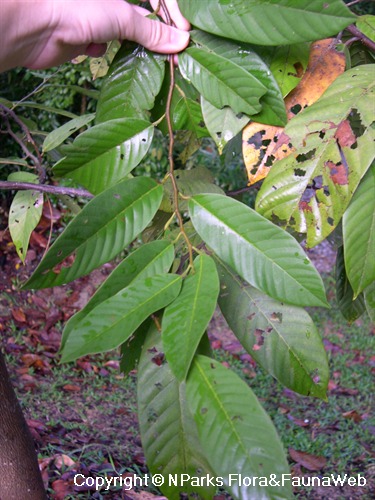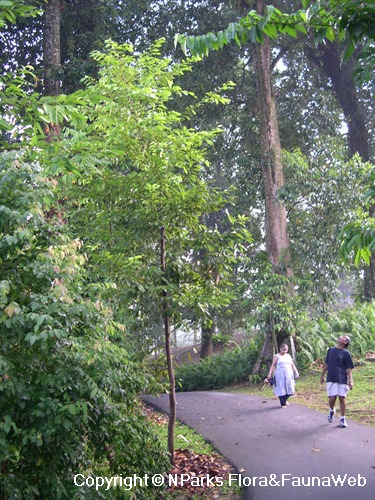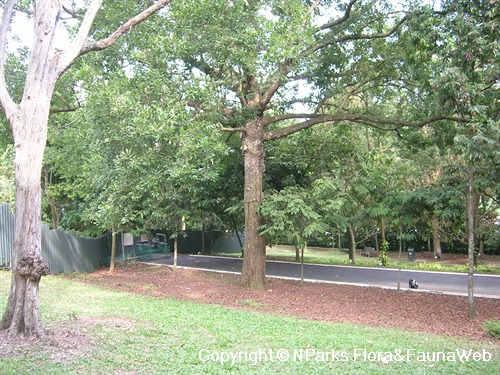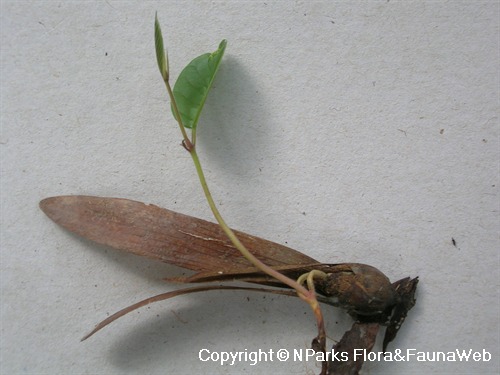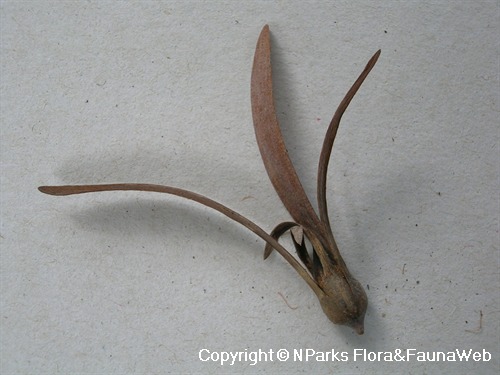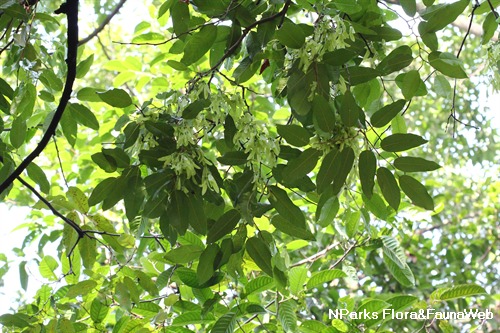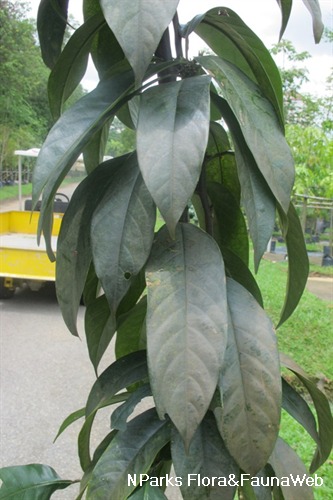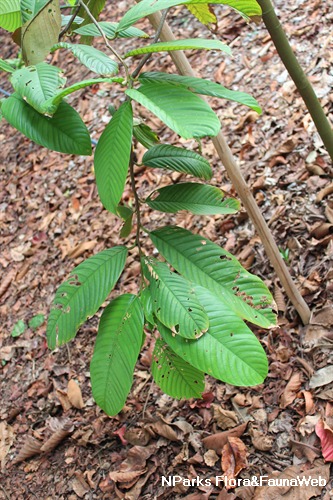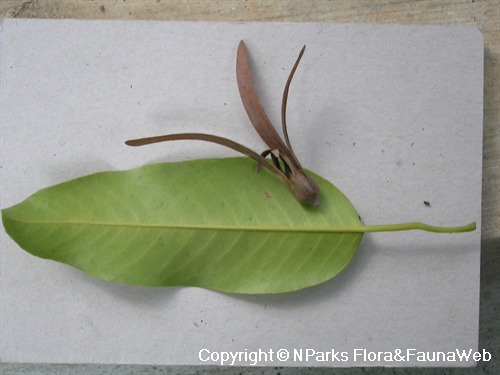
Back
Anthoshorea roxburghii (G.Don) P.S.Ashton & J.Heck.
| Family Name: | Dipterocarpaceae |
| Synonyms: | Shorea roxburghii G.Don, Shorea talura Roxb. |
| Common Name: | Temak |
Name
Classifications and Characteristics
| Plant Division | Angiosperms (Flowering Seed Plants) (Dicotyledon) |
|---|---|
| Plant Growth Form | Tree (Big (>30m)) |
| Lifespan (in Singapore) | Perennial |
| Mode of Nutrition | Autotrophic |
| Plant Shape | Irregular |
Biogeography
| Native Distribution | From India, Myanmar, Laos, Cambodia, Vietnam, Thailand to northern Peninsular Malaysia. |
|---|---|
| Native Habitat | Terrestrial (Primary Rainforest, Monsoon Forest) |
| Preferred Climate Zone | Tropical, Sub-Tropical / Monsoonal |
| Local Conservation Status | Non-native |
Description and Ethnobotany
| Growth Form | It is a small to large tree, with small buttresses or sometimes without. |
|---|---|
| Trunk | Its bark is deeply, narrowly and irregularly fissured. |
| Foliage | Its stalked, alternately-arranged leaves have leaf blades that are elliptic-oblong, and are about 12 by 5 cm. |
| Flowers | Its white-petaled flowers are about 2.5 cm across, with a red-tinge in the centre, and are borne on clusters. |
| Fruit | Its fruits are winged nuts, about 9 cm long, consisting of a narrowly ovate nut enclosed within 3 long outer wings that are 9 by 1.2 cm, and 2 short and narrow inner wings that are up to 4.5 cm long. |
| Habitat | It grows in lowland evergreen and deciduous forests. |
| Cultivation | It can be propagated by seed. |
| Etymology | Latin Shorea, commemorating Sir John Shore (1751–1834), a Governor-General of India; Latin roxburghii, commemorating William Roxburgh (17511815), superintendent of the Calcutta Botanic Garden, India |
| Ethnobotanical Uses | Timber & Products: Its timber is used in construction of houses. Cultural / Religious: Heritage Trees : There is currently one individual of Shorea roxburghii listed as a Heritage Tree in Singapore. It can be found at Singapore Botanic Gardens. To find out more about these trees, please visit the Heritage Tree Register. |
Landscaping Features
| Landscaping | It is suitable for parks and streetscapes for its versatility in adapting to environmental conditions. |
|---|---|
| Desirable Plant Features | Ornamental Fruits |
| Landscape Uses | General, Suitable for Roadsides, Parks & Gardens |
Fauna, Pollination and Dispersal
| Pollination Method(s) | Biotic (Fauna) |
|---|---|
| Seed or Spore Dispersal | Abiotic |
Plant Care and Propagation
| Light Preference | Full Sun, Semi-Shade |
|---|---|
| Water Preference | Moderate Water |
| Plant Growth Rate | Moderate |
| Rootzone Tolerance | Drought Tolerant, Moist Soils, Well-Drained Soils, Fertile Loamy Soils |
| Propagation Method | Seed |
Foliar
| Foliage Retention | Evergreen, Drought / Semi-Deciduous |
|---|---|
| Mature Foliage Colour(s) | Green |
| Mature Foliage Texture(s) | Leathery |
| Young Flush Texture(s) | Velvety / Furry / Tomentose |
| Foliar Modification | Stipule |
| Foliar Type | Simple / Unifoliate |
| Foliar Arrangement Along Stem | Alternate |
| Foliar Attachment to Stem | Petiolate |
| Foliar Shape(s) | Non-Palm Foliage (Elliptical, Oblong) |
| Foliar Venation | Pinnate / Net |
| Foliar Margin | Entire |
| Leaf Area Index (LAI) for Green Plot Ratio | 2.5 (Tree - Open Canopy) |
Floral (Angiosperm)
| Flower & Plant Sexuality | Bisexual Flowers |
| Flower Colour(s) | Red, White |
|---|---|
| Flower Grouping | Cluster / Inflorescence |
| Flower Location | Axillary |
| Flower Symmetry | Radial |
Fruit, Seed and Spore
| Mature Fruit Colour(s) | Brown |
|---|---|
| Fruit Classification | Simple Fruit |
| Fruit Type | Indehiscent Dry Fruit , Nut / Nutlet |
Image Repository
Others
| Master ID | 1834 |
|---|---|
| Species ID | 3127 |
| Flora Disclaimer | The information in this website has been compiled from reliable sources, such as reference works on medicinal plants. It is not a substitute for medical advice or treatment and NParks does not purport to provide any medical advice. Readers should always consult his/her physician before using or consuming a plant for medicinal purposes. |

